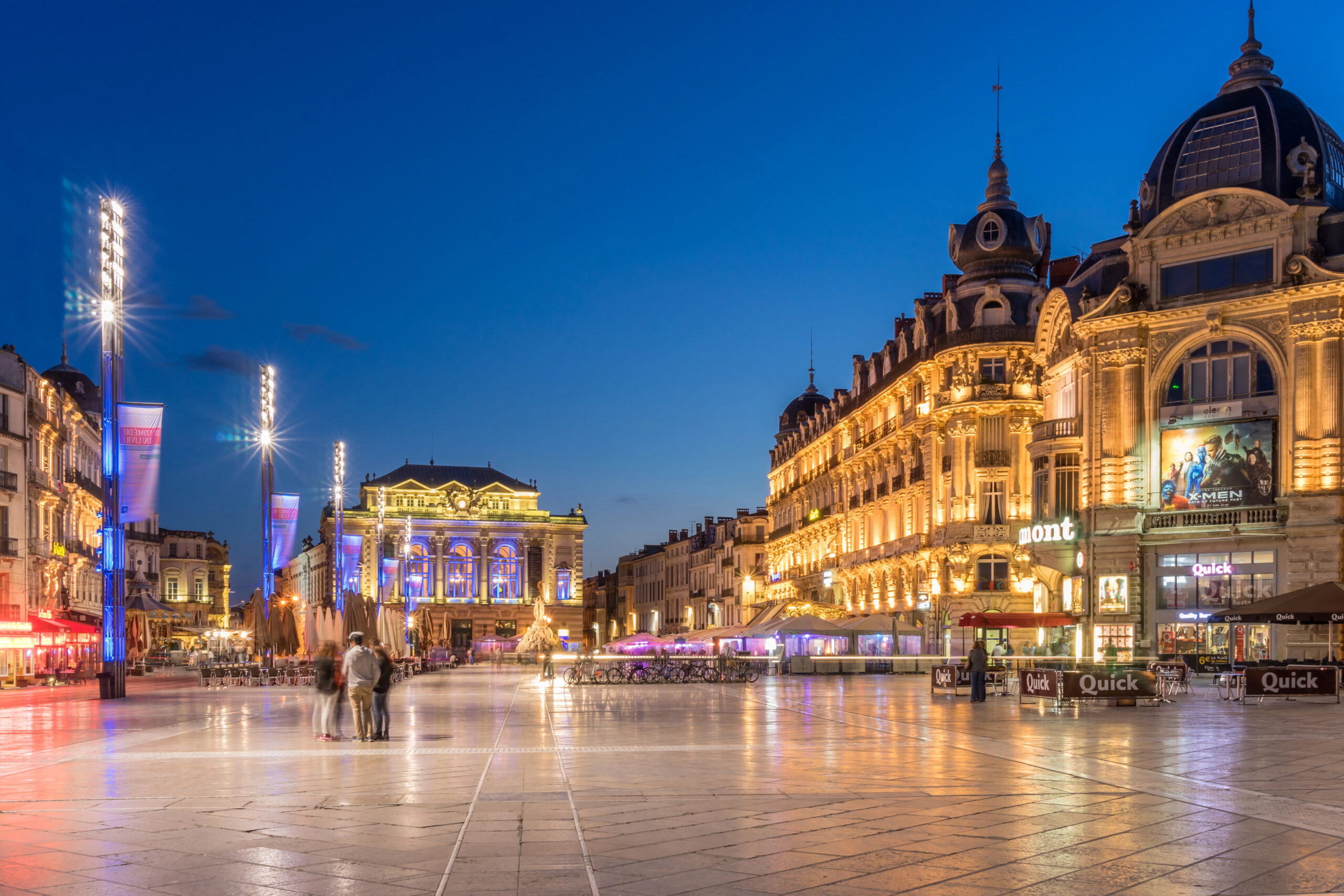
Get all the essential info for traveling to Montpellier in our guide, from top attractions to local tips. Plan your perfect trip to this French city easily.
Are you planning a trip to the south of France? Let’s introduce you to Montpellier! Between the Mediterranean Sea and vineyard-draped hills, Montpellier is a city blending historic charm with youthful energy. Known for its sunny weather, lively streets, and cultural scene, Montpellier offers a mix of old-world and modern flair.
In this guide, we’ll take you through Montpellier’s winding medieval alleys, bustling squares, and leafy parks. Whether you’re looking for the top sights and attractions, have questions about when to visit, or are looking to get around, our guide to Montpellier is great for beginners looking to visit the south of France!
Why Visit Montpellier
Why should Montpellier be your next travel destination? This lively French city blends history, culture, and Mediterranean flair in a way that’s sure to capture your interest. Walk through its old streets filled with buildings, cozy cafes, and trendy shops. Plus, Montpellier is full of culture, with museums, festivals, and art scenes that bring the city to life.
History and Culture
Montpellier is located in southern France in the sunny Languedoc-Roussillon region and has a rich history spanning more than a thousand years. Founded in the 10th century, it grew into a trade center thanks to its strategic position near the Mediterranean Sea.
During the Middle Ages, Montpellier became famous for its university, which opened in 1220 and drew scholars and students from all over Europe. This university was a major hub for learning and medicine, helping the city prosper.
As Montpellier continued to develop through the Renaissance, it became known for its culture and art. The city’s architecture from this period, like the Place de la Comédie with its beautiful buildings and the Opera House, reflects its wealth and sophistication.
Today, Montpellier is a blend of its medieval past and modern vibrancy. It hosts festivals celebrating dance and theater, and its Musée Fabre is known for its impressive European art collection. With its pleasant climate and close proximity to beaches and countryside, it continues to attract visitors seeking both history and relaxation in the beautiful south of France.
Getting There and Getting Around
Visiting Montpellier is rather easy and straightforward for travelers, with various transportation options available for getting there and exploring the city.
Getting There
Montpellier can be reached by plane, with Montpellier-Méditerranée Airport serving domestic and European flights. Alternatively, travelers can arrive by train, with Montpellier Saint-Roch station being a hub on the French rail network, connecting to cities like Paris, Marseille, and Barcelona. For those driving, the city is accessible via major highways, offering access from nearby regions.
Getting Around
Once in Montpellier, getting around is easy with the local transport system. The city has a network of trams and buses that cover most areas, making it convenient to reach attractions and navigate the city. Walking or cycling are also popular options, with many pedestrian-friendly streets and bike lanes. You can purchase tickets for public transport at tram stops or from kiosks, and exploring on foot allows for discovering other neighborhoods and hidden gems.
Top Attractions in Montpellier

Montpellier has plenty of highlights and attractions to see, witness, and experience while in the city. From lively places like Place de la Comédie to peaceful spots like Jardin des Plantes, each place gives you a different taste of the atmosphere. Whether you like old buildings, gardens, or art, Montpellier has something special.
Place de la Comédie: This is the heart of Montpellier, known for its iconic Three Graces fountain, cafes, and street performers.
Montpellier Cathedral (Saint-Pierre Cathedral): A Gothic masterpiece with beautiful stained glass windows and impressive architecture.
Promenade du Peyrou: A park offering panoramic views of the city and featuring the impressive Château d’Eau water tower.
Musée Fabre: One of France’s largest art museums, showcasing a collection of European paintings, sculptures, and contemporary art.
Jardin des Plantes: A botanical garden dating back to the 16th century, perfect for walks among exotic plants and historic greenhouses.
Porte du Peyrou: A triumphal arch marking the entrance to the old town, adorned with statues and offering historical insights.
Antigone District: A modern urban development with neoclassical architecture, spacious squares, and striking buildings designed by Ricardo Bofill.
Other Things to Know About Visiting Montpellier
Before you go, here are some other important things to know about visiting Montpellier.
When to Visit: The best time to visit Montpellier is in the spring (April to June) or fall (September to October) when the weather is best and the crowds are smaller.
Daytrips from Montpellier: Consider day trips to nearby attractions like the medieval town of Carcassonne, the Pont du Gard, or the beaches of the Mediterranean coast.
Festivals & Events: Montpellier hosts several exciting festivals and events throughout the year, such as the Festival de Radio France et Montpellier in July and the Cinemed Mediterranean Film Festival in October.
While Montpellier may not be Paris, but it’s certainly not a spot to be missed when visiting France. The south of France offers an entirely different experience, and it’s waiting for you to come and experience the magic! We hope this article has inspired you to visit Montpellier, and to start planning your next trip with Adventures by Matt!



Leave a Reply